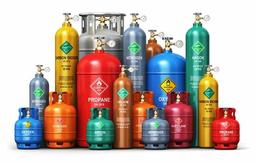
Unit 11: Gases, Kinetics, & Equilibrium Practice Test
Quiz by Stephen Spitler
Feel free to use or edit a copy
includes Teacher and Student dashboards
Measure skillsfrom any curriculum
Tag the questions with any skills you have. Your dashboard will track each student's mastery of each skill.
- edit the questions
- save a copy for later
- start a class game
- automatically assign follow-up activities based on students’ scores
- assign as homework
- share a link with colleagues
- print as a bubble sheet
- Q1
Which of the following correctly describes temperature?
The average kinetic energy of the particles in a substance
H of a substance
How hot or cold a substance is
How much heat a substance has
30s - Q2
Which of the following correctly describes pressure?
The amount of gas in a container
The temperature of a gas inside a container
The rate that a gas is able to transfer from one container to another
The force of collisions of a gas on its container
30s - Q3
How do you convert oC to Kelvin?
oC and Kelvin are the same
oC - 273
oC +273
30s - Q4
Convert 400oC to Kelvin.
127 K
673 K
400 K
30s - Q5
What will happen to the size of a balloon if you take it out of the hot sun and place it in the freezer?
The volume/size will remain constant
The volume/size will increase
The volume/size will decrease
30s - Q6
What will happen to the size of an inflated balloon if you take it out of the freezer and place it in a warm room?
The volume/size will decrease
The volume/size will remain the same
The volume/size will increase
30s - Q7
Which of the following statements about the Kinetic Molecular Theory (KMT) is false?
Collisions between particles are completely elastic
Gas particles are in constant organized motion
The volume of the particles is negligible compared to the space between them
Particles do not exert attractive forces on one another
30s - Q8
Which of the following statements about the Kinetic Molecular Theory (KMT) is false?
Collisions between particles are completely elastic
The volume of the particles is equal to the space between them
Particles do not exert attractive forces on one another
Gas particles are in constant random motion
30s - Q9
Which of the following statements about the Kinetic Molecular Theory (KMT) is false?
Particles exert attractive forces on one another
The volume of the particles is negligible compared to the space between them
Collisions between particles are completely elastic
Gas particles are in constant random motion
30s - Q10
Which of the following statements about the Kinetic Molecular Theory (KMT) is false?
Particles do not exert attractive forces on one another
The volume of the particles is negligible compared to the space between them
Collisions between particles are completely inelastic
Gas particles are in constant random motion
30s - Q11
Why should you put air in your tires in the wintertime?
The cold temperatures cause the tire pressure to increase
The cold temperatures cause the volume of the tires to decrease
The cold temperatures cause there to be less molecules of air in the tires
The cold temperatures cause the tire pressure to decrease
30s - Q12
Which of the following correctly describes the relationship between temperature and average kinetic energy of gas particles?
As the temperature of a gas increases, the average kinetic energy of the gas particles also increases
As the temperature of a gas increases, the average kinetic energy of the gas particles remains constant
As the temperature of a gas increases, the average kinetic energy of the gas particles decreases
30s - Q13
I have two tires of equal volume, a blue tire with 500 moles of nitrogen gas inside, and a red tire with 375 moles of nitrogen gas inside. Which tire has a greater pressure?
The red tire
The blue tire
They have the same pressure since their volume is the same
30s - Q14
Why does a small (40 kg) person walking on stilts (long thin sticks) sink into the snow more quickly than a large (90 kg) person wearing snowshoes?
The person wearing snowshoes exerts less pressure on the snow because the surface area of the snowshoe is larger than the area of the wooden stilt.
Since the person with snowshoes has more mass (90 kg), they will exert more pressure on the snow
The force is the same but the person wearing stilts has a greater surface area, as a result, they will exert less pressure on the snow
The person with the snowshoes has more gravity acting on them since they have a larger mass, and as a result, the pressure they exert on the snow is less powerful
30s - Q15
How many moles of fluorine gas were released in the chemistry lab if the pressure was 2.43 atm and the volume was 1.5 L at 298 K?
89.18 mol
1086.21 mol
0.149 mol
0.001 mol
30s